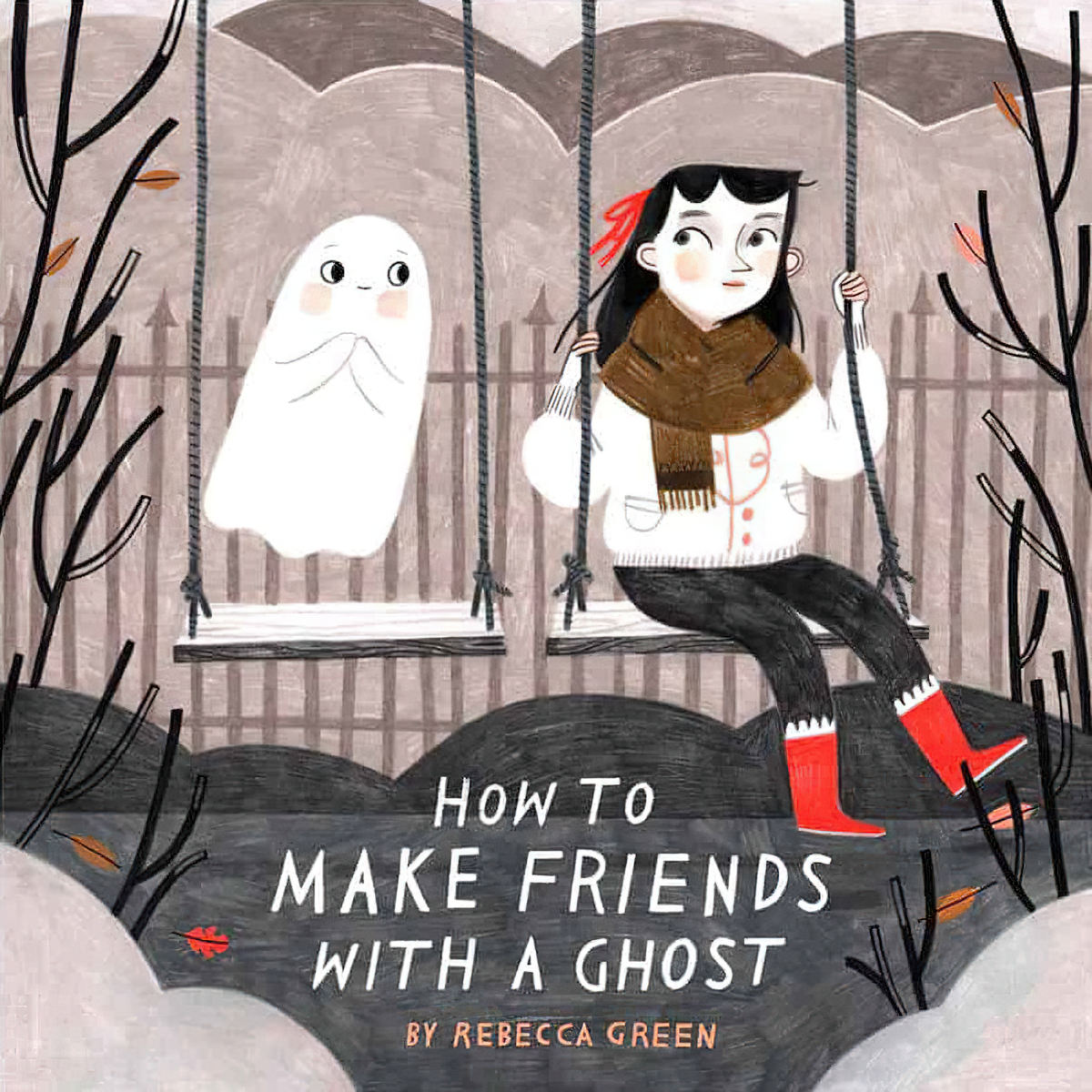How To Make Friends With A Ghost is a 2017 picture book written and illustrated by Rebecca Green. This cosy supernatural story is written as a non-fictional how-to guide and because this book deals with supernatural subject matter, covertly teaches how to be a good friend.
PARATEXT OF HOW TO MAKE FRIENDS WITH A GHOST
This book will find popularity each year around Halloween. Like many ‘Halloween’ picture books, the illustrations are desaturated with accent colours of orangey-reds. (Cf. Creepy Carrots, for instance.) Though it’s far from obvious, there’s something warm, spicy and pumpkin-y about this palette:
The soft palette with its dominant warm greys is similar to that found in Gaston.
What do you do when you meet a ghost? One: Provide the ghost with some of its favorite snacks, like mud tarts and earwax truffles. Two: Tell your ghost bedtime stories (ghosts love to be read to). Three: Make sure no one mistakes your ghost for whipped cream or a marshmallow when you aren’t looking! If you follow these few simple steps and the rest of the essential tips in How to Make Friends with a Ghost, you’ll see how a ghost friend will lovingly grow up and grow old with you.
A whimsical story about ghost care, Rebecca Green’s debut picture book is a perfect combination of offbeat humor, quirky and sweet illustrations, and the timeless theme of friendship.
MARKETING COPY
(It’s interesting to consider what it means for a picture book to be ‘whimsical’.)
CARNIVALESQUE STORY STRUCTURE OF HOW TO MAKE FRIENDS WITH A GHOST
I’ve chosen to analyse this story structure with the carnivalesque template because although it breaks from the archetypal carnivalesque picture book in some ways, this is basically a Child/All in Fun combo breaking away from the eyes of authority and enjoying their own adventure.
An Every Child is at Home
There is one clear difference between this story and more typically carnivalesque picture books such as The Day Jimmy’s Boa Ate The Washing, The Cat In The Hat or Come Away From The Water, Shirley. In How To Make Friends With A Ghost, there is no introduction of the adult authority figure against which the child character rebels.
The reason, I think, is this: The girl is her own authority figure. There are shades of the Female Maturity Formula in here. (Can you think of a similar plot and tone but featuring a boy? I can’t.) The girl doesn’t so much rebel against authority. Instead she channels kindness and nurturing in the way a mother would. As we shall see, she herself becomes a mother, then a grandmother archetype.
This main character has little to individuate her (in common with carnivalesque children). I would argue she is the Every Girl rather than the Every Child. If she were drawn as a boy, we would note he is individuated from typical storybook Every Boys due to his highly empathetic nature. (Note that highly empathetic, caring boys are not entirely absent from children’s stories. The boy in Pixar’s Up is a good example, and a Pixar exception.) However, these boys don’t tend to be described on the page as ‘sweet, warm and kind’.
The Every Child wishes to have fun.
This is taken for granted in a carnivalesque picture book and didn’t need to be spelled out on the page. I feel it’s especially important to let girl characters have fun and break rules because this is the only way we can let girls out of their ‘little mother’ cages.
Does this book achieve this? Let’s see.
Disappearance or backgrounding of the home authority figure
Because the Girl and the Mother are one and the same, the storyteller doesn’t need to get rid of the parents/caregivers. They were never there in the first place.
Appearance of an Ally in Fun
The ghost!
The ‘straight’ ghost is scary, but the carnivalesque ghost can be an ally in fun.
Western readers will probably think of Caspar when they see Green’s white ghost with the wavy bottom. Green’s ghost has ‘arms but no fingers’. Similarly cute-ified, white ghosts can be seen all around the world.
Take the Japanese hajikkaki (恥っかき), in turn based on a Chinese spirit called the shahyōchū (謝豹虫). Haji means ‘shame’. This ghost is always covering its face out of shame. Unlike the Caspar-esque (Western) ghost, the hajikkaki has arms and legs but, in common with the Caspar-esque ghost, is white, hairless, plump and a therefore childlike and cute. (That said, the hajikkaki does have fangs.)
This Japanese ghost appeared in old yookai scrolls such as the Bakemono tsukushi emaki (1820). I point this out to say that humans have long sapped the psychological power from scary ghosts by rendering them harmless and playful. The hajikkaki is notable for its constant shame, which induces pity, and perhaps our own desire to nurture it like a young child.
The Fun Phase
This is how the fun phase typically looks in a more ‘masculine’, linear plot structure, carnivalesque or otherwise:
- Hierarchy is overturned. Fun ensues.
- Fun builds!
- Peak Fun!
However, the fun in this mock how-to guide doesn’t build to a climax, but rather feels episodic, more like the separate but connected chapters of Anne of Green Gables than Stuck by Oliver Jeffers.
Caring for this ghost is having fun with a new friend.
Notably, much of the fun derives from the ickiness of the recipes prepared for this ghost pet. Up to a certain age, kids love disgusting recipes. Developmentally, gross-out detail appeals until approximately adolescence, and is typically replaced by increasing interest in sex.
Gross-out and the carnivalesque go together. In Voracious Children: Who eats whom in children’s literature, Carolyn Daniel writes about ‘carnivalesque-grotesque narratives’, and How To Make Friends With A Ghost, despite its whimsical artwork and gentle, episodic, feminine build, is an (unlikely) example of that. Yes, the girl in this story does get to have fun. She may be doing typically motherly things with her ‘friend’ (more like a pet or a child), such as preparing it for bed and cooking its meals, but because those meals are disgusting, she’s having oodles of fun.
The bathroom is often a carnivalesque room of the house. In this case, the author/illustrator creates humour by depicting a cauldron instead of a bath.
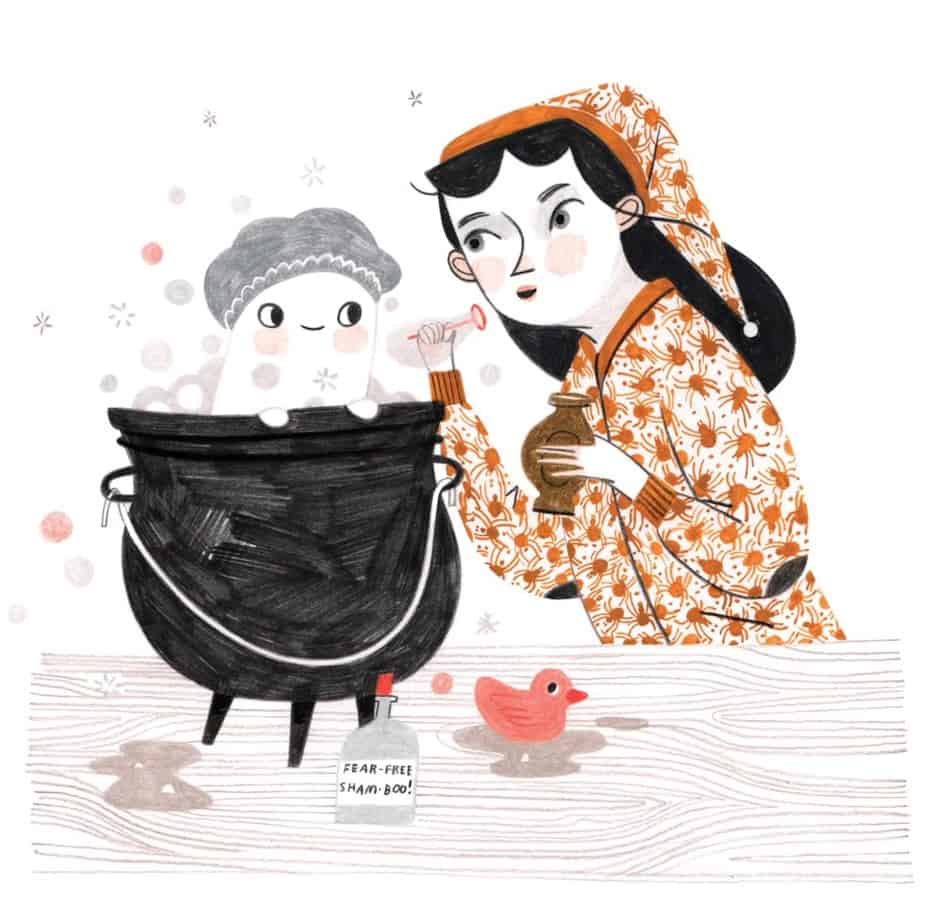
The girl is also a trickster, or a ‘Cunning Woman’ archetype in this particular spread, where she is (dressed as) a witch, winking conpiratorially at the reader, breaking the fourth wall.
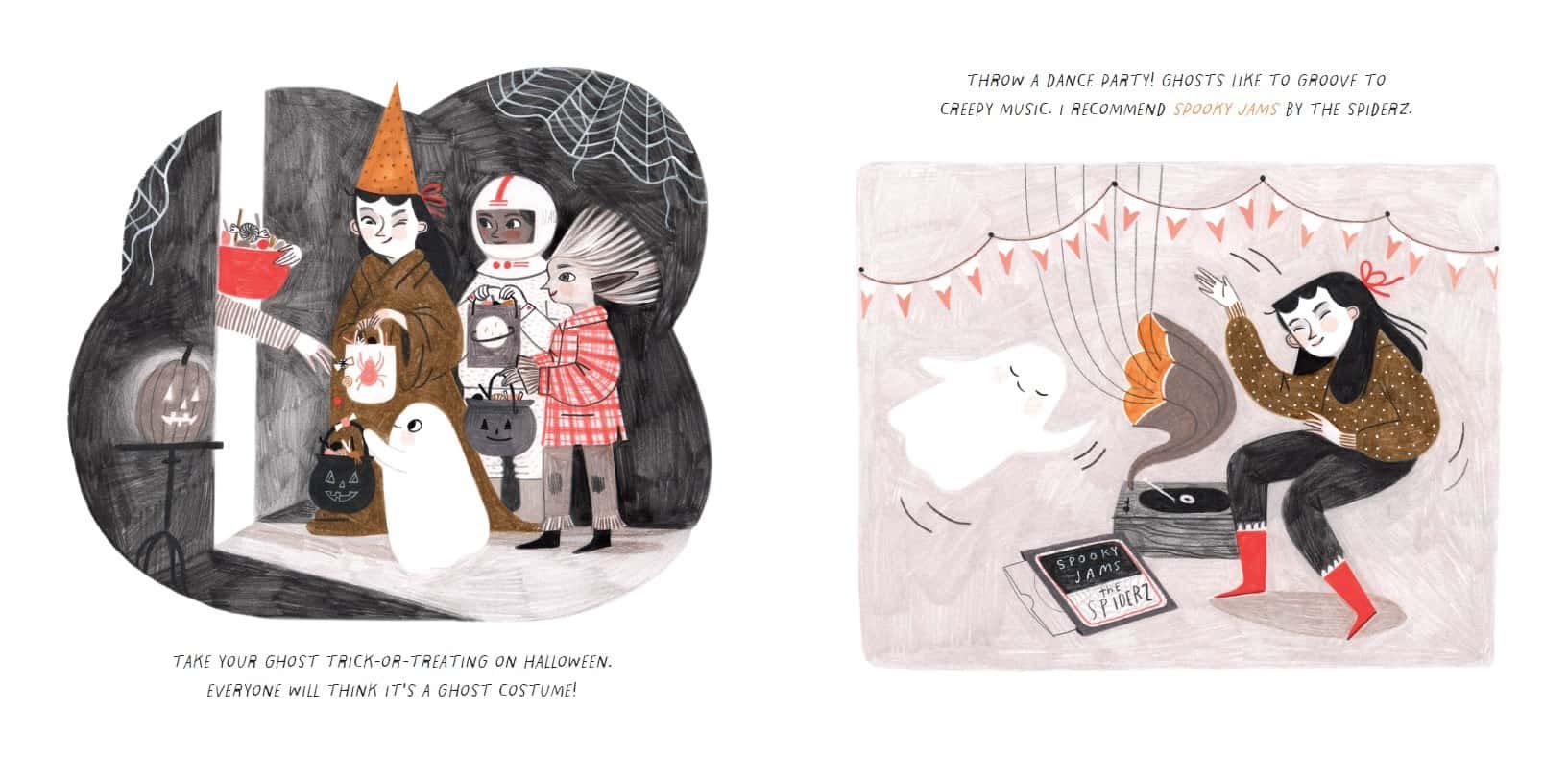
The story includes intertextual references to pop cultural phenomena which will appeal to the dual audience, e.g. Tales of the Living (cf. Tales of the Dead).
Notably, as the girl learns how to care for a ghost, she is not positioned as a loner. She has human friends alongside her imaginary friend, presumably because if you learn the skill of friendship, you’ll make friends wherever you go.
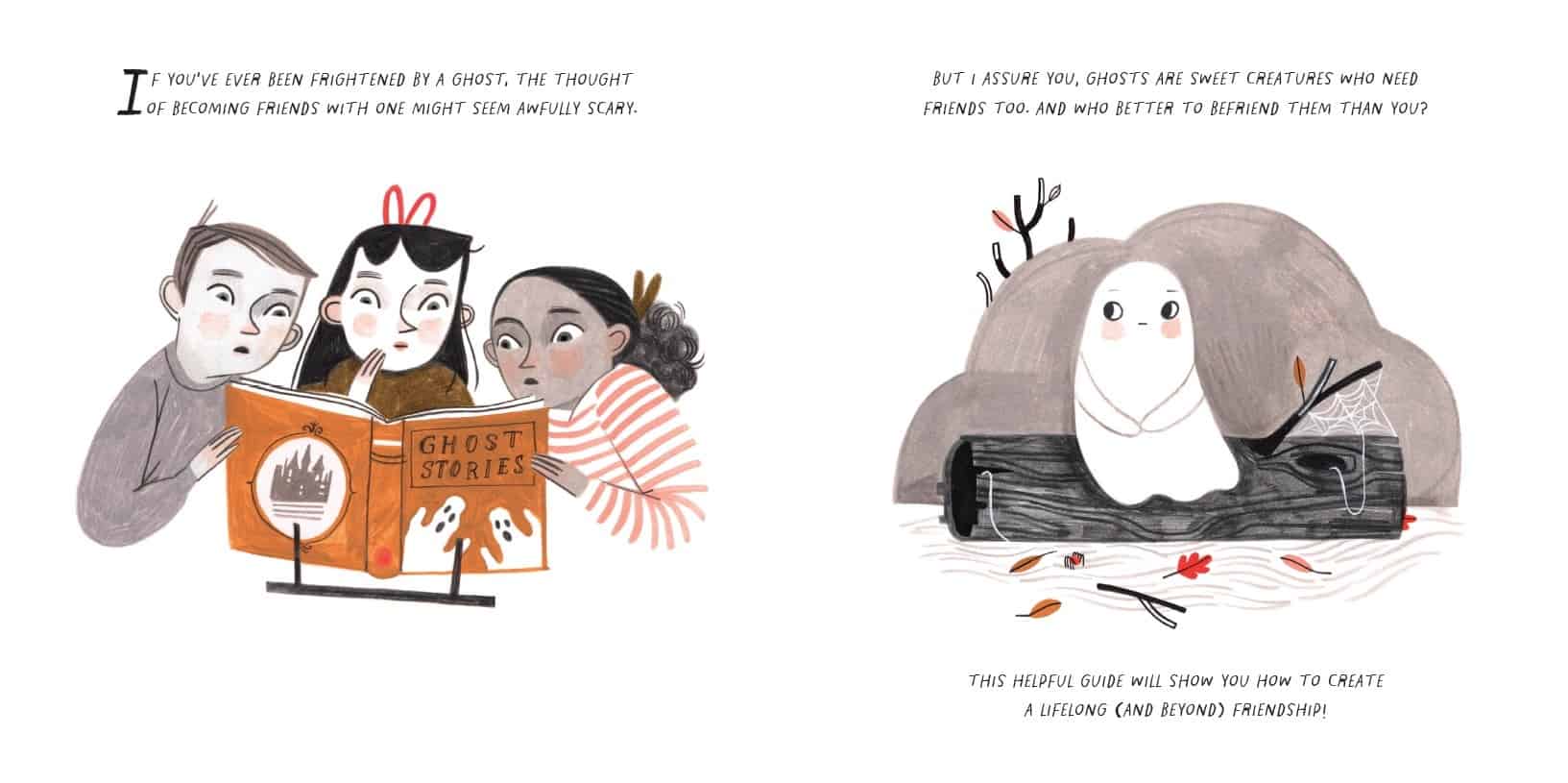
Of the girl’s friends, it’s the boy who does something uncaringly mischievous with her precious ghost, which is typical storybook gendering. We see caring girls vs. uncaring/mischievous boys right across children’s literature.
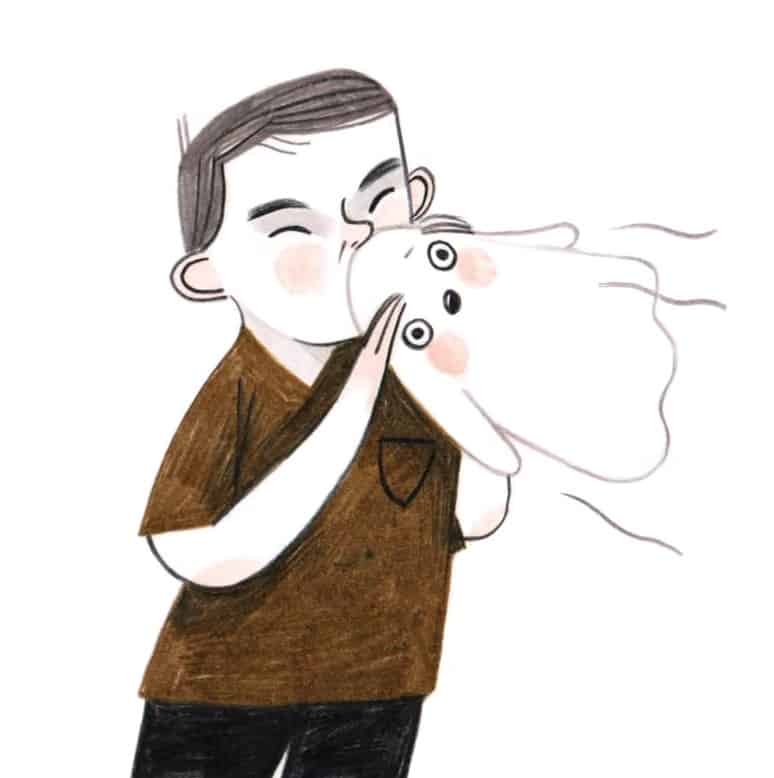
Surprise! (for the reader)
The stronger the surprise at the end of a carnivalesque picture book, the higher the concept. Not all carnivalesque books have what we’d call a ‘surprise’ in the gag sense, but there must be something we didn’t expect.
I did not expect this book would take us through the rest of the girl’s lifetime. I was unprepared for that! I expected the book to end after the girl tucks the ghost in, but no, this is a longer-than-usual picture book running to 40 pages rather than the usual 32.
The big surprise: The old lady dies and becomes a ghost herself. This is the perfect kind of surprise, because when we find out, we think, “Well, of course!”
Return to the Home state
The ‘Home State’ in this story is the reversion to young childhood, which is old age. This is ‘circle of life’ stuff. This has been a useful case study of the carnivalesque, partly because of its expanded definition of ‘Home’.
